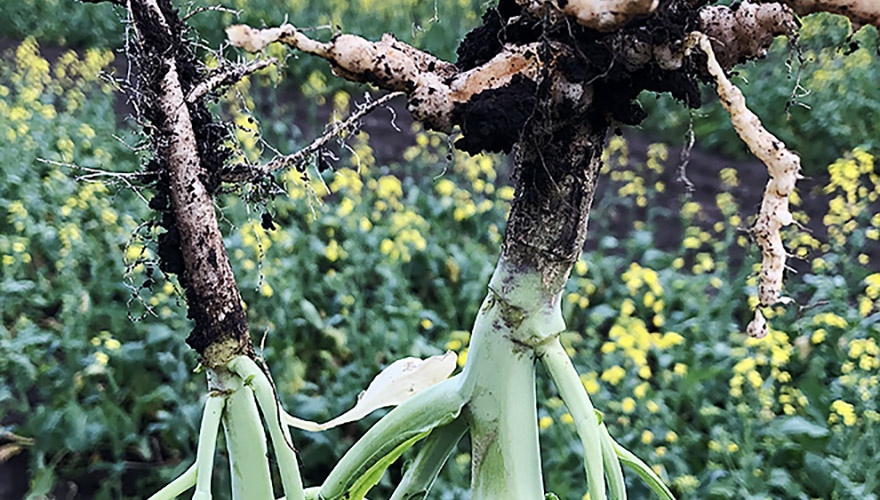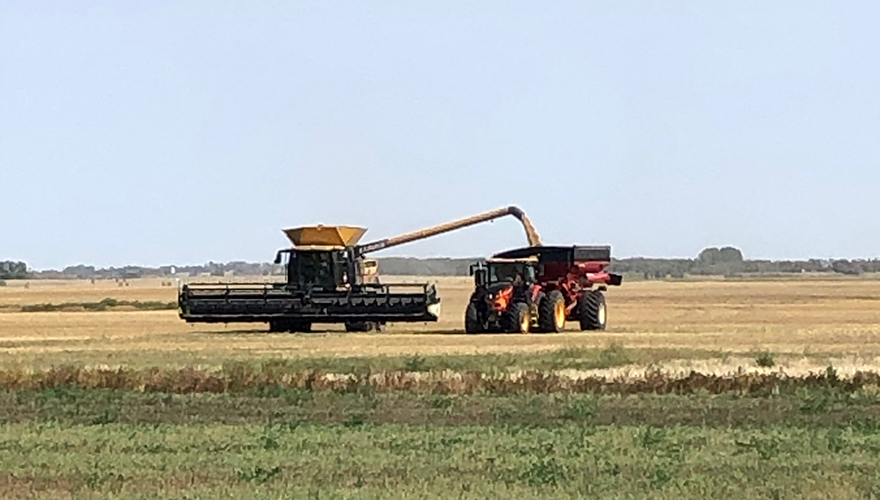Posted September 24, 2019
GETTING IT IN THE BIN IS JUST THE BEGINNING
How’s your harvest going? If you’ve got one nervous eye on the calendar and one on a field that’s yet to be combined, you’re not alone.
Harvest conditions across the Prairies have been erratic this year, which means a lot of grain will be tough going in the bin, and that worries Darcy Eskra.
The regional account manager with Nutrien Ag Solutions in Killam, Alberta, says the delayed harvest and high precipitation along with poor drying days may cause farmers to “push the panic button” and take crops off at higher moisture levels, increasing the risk of spoilage.
In a harvest season like this one, it’s critical for farmers to monitor their bins to ensure grain is drying and conditioning properly and take corrective action when it isn’t.
Monitor, monitor, monitor
With everything that needs to be done to prepare for winter, it’s easy to neglect bins. Even the toughest grain can be cooled, dried and brought down to optimal temperature and moisture levels with the strategic use of fans, but it starts with proper monitoring – first when the grain goes in the bin and regularly after that.
“There’s a wide range of ways to do that from manual processes, like pushing a length of rebar into the grain, all the way up to fully automated ‘set it and forget it’ systems,” says Kyle Folk, president of IntraGrain Technologies in Regina, makers of Bin-Sense monitoring systems.
The key, says Eskra, is to stay on top of it. “You can have the best system out there but if you’re not conditioned to use it, it will fail you.” He tells a story of a canola farmer who was filling bins as they were being built and equipped with a sophisticated grain monitoring system. “The canola sat there for two weeks without him hooking up the system. When we checked it, the canola was over 40 degrees Celsius! We turned on the fans and saved it, but a few more days and it would have been ruined.”
Fan on, fan off
Grain going into the bin hot and/or too wet is at the greatest risk of spoilage, and while grain moisture is a key consideration, don’t forget the damage heat can do. “Canola can go in the bin at 7% moisture and warm and be at a higher risk of spoilage than canola at 10% moisture when it’s cooler,” says Eskra.
Measure and record the temperature and moisture content of your grain as you fill your bins. Eskra says the Canadian Grain Commission (CGC) has useful safe storage charts that show when spoilage is likely to occur, based on seed moisture and temperature, in most major crops.
Turn on your fans to cool and dry the crop – and those are not the same thing. Even dry crops can spoil if they are allowed to heat up. “Ambient air temperature and relative humidity are key pieces of information that let you know when to operate your fans,” says Eskra.
If the crop goes into the bin moist, use fans to dry it down to optimal moisture levels. For canola, that’s 10%, wheat is 14.5% and barley is 13.5%.
Monitor grain temperature regularly and use fans to cool the grain if natural convection has led to hot spots or condensation.
While running fans continuously is not necessary, farmers must regularly monitor their bins to know when to hit the on switch.
An ounce of prevention
There is a lot of technology available to make monitoring easier, such as sensor cables installed in bins to measure temperature and moisture content throughout the grain.
From a hand-held device, where you plug into the cable system bin-side to download information, to wireless remote systems that allow you to operate fans from wherever you are in the world – it’s all possible. But is it affordable?
Absolutely, says Folk. “There is no insurance on bin losses,” he says. It doesn’t happen often, but the law of percentages says losing grain to spoilage is going to happen sooner or later.
“Take a small 5,000 bushel bin, and say the crop in there is worth $8 per bushel, that’s $40,000 in that bin,” says Folk. “That $40,000 would easily outfit a large operation with a top end system. It’s really pennies per bushel to install a monitoring system, and it’s not just us saying that – it’s everyone in this industry.”
FEATURED LINKS
NEWSLETTER
Want to stay caught up in all things agriculture? Sign up for the newsletter and get all the latest news straight to your inbox.
How Use To Data When Selecting Seeds Variety
Posted October 07, 2019





